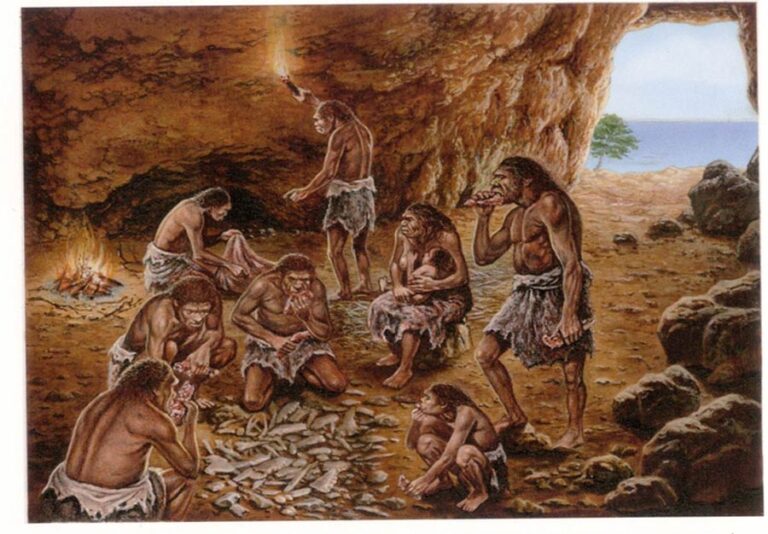Greek mythology is a treasure trove of captivating tales and legendary figures. Among these, the testimonies of cave dweller of greek myth stand out for his or her thriller and intensity. These beings, whether tremendous or divine, frequently inhabited the darkest recesses of the earth, embodying both the fears and hopes of historical Greeks. This article explores the various cave dweller of greek myth of Greek fantasy, examining their importance and the training they communicate.
The Cyclopes: Monstrous Craftsmen
The Cyclopes, with their unmarried, obtrusive eye, are the various most famous cave dweller of greek myth in Greek mythology. These giants have been famed not most effective for his or her fearsome look but also for their fantastic talents as craftsmen. According to Hesiod’s “Theogony,” 3 Cyclopes—Brontes, Steropes, and Arges—had been the sons of Uranus (Sky) and Gaia (Earth). Imprisoned via their father, they were later freed by using Zeus and performed a crucial role in his victory over the Titans by means of forging his thunderbolts.
The Cyclopes’ dwelling in darkish, subterranean caves symbolizes their raw, elemental energy. The cave placing underscores their connection to the primal forces of the earth, in addition to their isolation from the civilized global. This duality of introduction and destruction makes the Cyclopes compelling figures in Greek mythology.
The Gorgons: Guardians of the Underworld
The Gorgons, especially the infamous Medusa, are another group of cave dweller of greek myth which have left an indelible mark on Greek myth. Medusa and her sisters, Stheno and Euryale, had been depicted as terrifying creatures with snakes for hair and the electricity to show everyone who checked out them into stone. According to various assets, the Gorgons resided in a far-off cave at the threshold of the world, a becoming home for such fearsome beings.
Medusa’s story is particularly poignant, as she became once a beautiful maiden transformed into a monster by means of Athena as punishment for desecrating her temple. This transformation and subsequent isolation in a cave spotlight subject matter of punishment, transformation, and the liminality between life and death. Medusa’s cave as a result becomes an area of both horror and tragic splendor.
The Nymphs: Mystical Cave Inhabitants
Not all cave dweller of greek myth in Greek mythology are enormous. The nymphs, especially the Naiads and Dryads, frequently made their houses in caves close to water sources or inside the depths of forests. These lovely and benevolent spirits were taken into consideration protectors of nature, embodying its life-giving forces.
Caves served as sacred spaces for these nymphs, wherein they may offer shelter and healing to folks that respected the herbal international. The cave’s symbolism right here is one in all hidden beauty and quietness, a stark assessment to the dark and foreboding lairs of monsters. The nymphs’ association with caves highlights the twin nature of those spaces in Greek delusion—locations of each chance and sanctuary.
The Minotaur: The Beast of the Labyrinth
Perhaps one of the most well-known cave dweller of greek myth in Greek mythology is the Minotaur, a fearsome creature with the frame of a person and the pinnacle of a bull. Born from the union of Queen Pasiphae and a bull, the Minotaur become confined to the Labyrinth, a complex maze designed via Daedalus below the palace of Knossos in Crete.
The Labyrinth, while not a conventional cave, shares a lot of its symbolic factors. Its darkish, winding passages represent the unknown and the unconscious, making it a fitting prison for the colossal Minotaur. The hero Theseus’s journey thru the Labyrinth to slay the Minotaur is a powerful metaphor for confronting and overcoming one’s inner demons.
Hades and the Underworld: The Ultimate Cave
In Greek mythology, the underworld itself may be visible because the last cave. Ruled with the aid of Hades, this shadowy realm changed into the very last resting area for the souls of the lifeless. The front to the underworld become frequently depicted as a cave, guarded by way of the three-headed dog Cerberus, who ensured that no soul should escape.
Hades’ domain turned into a complex and multifaceted region, with areas along with the Elysian Fields for the blessed and Tartarus for the damned. The cave-like nature of the underworld highlights topics of loss of life, rebirth, and the cyclical nature of life. It additionally underscores the Greeks’ perception in an afterlife that mirrored the mysteries and complexities of life above floor.
The Sphinx: The Enigmatic Cave Guardian
The Sphinx, along with her lion’s frame and human head, is every other excellent cave dweller in Greek fantasy. Stationed close to the metropolis of Thebes, she posed a lethal riddle to travelers: “What walks on 4 legs inside the morning, legs at midday, and three legs inside the night?” Those who failed to answer correctly had been gobbled by the Sphinx.
The Sphinx’s cave represents a place of checking out and transformation. Oedipus’s a success solution to her riddle— “Man”—now not simplest brought about his ascension to the throne of Thebes but also symbolized his journey from lack of expertise to know-how. The cave, in this context, serves as a crucible wherein heroes are forged via trials and challenges.
Conclusion
The cave dweller of greek myth is numerous and complicated, embodying a wide range of symbolic meanings. From the substantial Cyclopes and Minotaur to the magical nymphs and enigmatic Sphinx, these beings inhabit the shadowy areas that lie between the recognized and the unknown, the civilized and the wild. Their tales provide profound insights into the historic Greek psyche, revealing fears, aspirations, and the timeless human quest for understanding and mastery over the mysteries of the arena. Through their testimonies, we are reminded of the power of fantasy to illuminate the darkest corners of our imagination and to manual us on our very own journeys of discovery and transformation.
